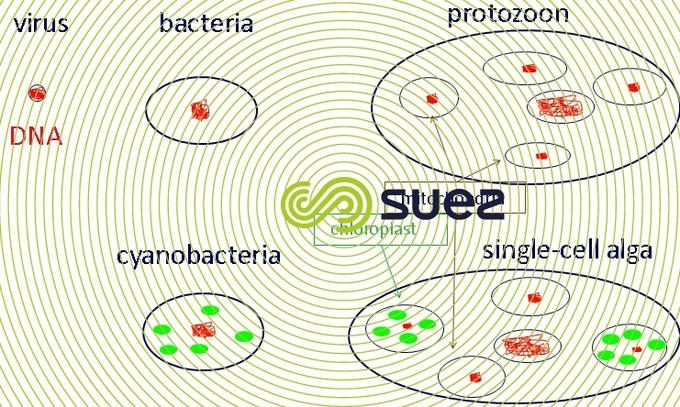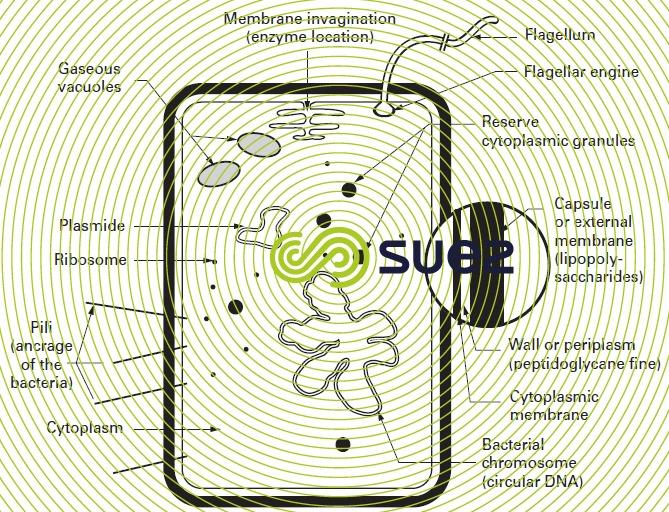water, the medium for microbial life
Reading time:what is a microbe?
Although certain authors consider this term to encompass only pathogenic bacteria, while for others the term includes all bacteria and viruses, in the broadest sense of the term, “microbes” constitute all single or multi-cell living organisms that can be observed through a microscope: bacteria, viruses, microalgae, and micro-invertebrates (particularly protozoans). In this accepted sense of the term, “microbe” is synonymous with “micro-organism”.
Certain of them are pathogenic; these are relatively small in number compared to the overall microbial population, but can be responsible for serious water-born diseases; among them you find opportunistic pathogens or parasites in the strictest sense, for which water is only a means of transport.
To the contrary, other ones can play a useful role, acting as primary producers or decomposers of organic material, self-purification agents in the natural environment, and agents in biological processes at treatment plants, among others.
Of the various aquatic microbes, bacteria play a particularly important role.
diagrammatic classification and constitution



This diagram highlights 2 essential constituants :Ce schéma fait apparaitre 2 constituants essentiels :
- Those which transport DNA
- Those which produce energy : the bacteria or the mitochondria capture nutrients in the external environment or the cytoplasm ; the cyanobacteria or the chloroplast capture light radiation (namely UV).
bacterial cell structure
As is the case with all living cells, the bacterial cell (figure 9) contains deoxyribonucleic acid ( DNA), which constitutes the genetic information support: it is the main component in genes, with are aligned into filaments called chromosomes. However there is a key difference in relation to other living beings:
- in all vegetables and animals, cells include several chromosomes, assembled in pairs (for example there are 46 in man, or 23 pairs). They are grouped into an individual nucleus, separated from the cytoplasm by a nuclear membrane; such organisms are called eukaryotes;
- in bacteria, on the other hand, the bulk of the genetic material forms a single chromosome (a “bacterial chromosome”) the two ends of which meet (“circular DNA”), and which is bare, as there is no membrane isolating it from the cytoplasm. Bacteria are termed prokaryotic. This is a characteristic that they only share with cyanobacteria (formerly “blue algae”) which perform photosynthesis.



In bacteria, you also find circular DNA on small structures independent from the chromosome called plasmides, which in particular carry genes that are resistant to antibiotics.
DNA controls reproduction, preserves the cell’s genetic inheritance in coded form, and controls the synthesis of proteins (and particularly of enzymes), which are produced in the cytoplasm in ribosomes by using RNA (ribonucleic acid).
The cell is surrounded by a rigid membrane which gives the bacterium its shape. Mobile species have hairs or flagellae.
the relationship between bacteria and the surrounding environment
Their reproduction speed depends on the speed of the transfer of nutritional material through the cytoplasm membrane. This speed therefore depends on:
- the concentration of the nutritional materials in the environment;
- the temperature (which the substrate dissemination speed depends on);
- the ratio [surface/volume]; and yet, in light of their small size (ranging from 0.4 to a few µm), of all the various organisms, bacteria are the ones for which the ratio is the highest; this explains why it has been possible to observe one cell division every 15 to 30 minutes in very favourable cases.
Bacteria only live in environments that fulfil certain characteristics: water content, pH, salinity, oxidation-reduction potential, and temperature. Favourable oxidation-reduction potential is quite variable, depending on whether the bacteria work using aerobiosis or anaerobiosis. These conditions are closely related to the composition of the enzyme mix secreted by the bacterium. Major variations in the environment’s characteristics can lead to species selection.
Depending on the optimum temperature for their enzymes, bacteria can be classified either as being thermophilic (temperature in excess of 50 °C), mesophilic (temperature of around 30 °C), psychrophilic (0 to 15 °C) or cryophilic (- 5 to 0 °C),
Certain species of bacteria may have a special shape due to sporulation: the spores that they create are cells in suspended animation with a constitution that enables them to resist heat and dryness (for instance) much better. When conditions return to normal, the spores germinate and produce active bacteria once again. Through selection and mutation, a complex population of bacteria can adapt to slow changes in the composition of the substrate they feed off.
Bookmark tool
Click on the bookmark tool, highlight the last read paragraph to continue your reading later












